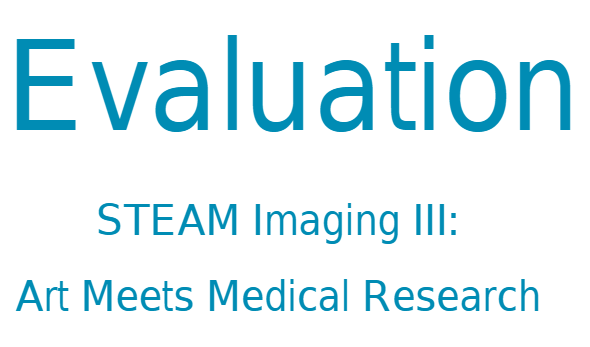Evaluation of STEAM Imaging III Course

As an integral part of the “STEAM Imaging” artist-in-residence program, STEAM courses for high school students are realized. The online course within the STEAM Imaging III program was jointly designed by Bulgarian intermedia artist and researcher Eli Joteva, based in Los Angeles, USA, and scientists from Fraunhofer MEVIS. The resulting course entitled “Inside Out: 10 STEAM Evenings” took place from September to December 2020. In addition, members of the public were invited to join the high school students during the opening talk by Prof. Victoria Vesna, and at the virtual excursions and Q&A sessions to the institutes’ MR laboratory, the Ars Electronica Center, and the UCLA CNSI California NanoSystems Institute ArtSci Center. Being able to move successfully between a variety of disciplines is a crucial competence for future education and innovation. With this initiative, Fraunhofer MEVIS and the collaborating partners aim to strengthen multidisciplinary talents, encourage school students to explore educational models of the future, and engage in self-driven ways with art, science, and technology to gain new skills that can expand their creative practice and expression. At the core are participatory, interdisciplinary inquiries, which include both fundamental knowledge and free creative exploration to understand a subject thoroughly.
The STEAM course was recently evaluated by Dr. Claudia Schnugg, a curator and producer of art and science collaboration and a researcher in the intersections of art and aesthetics with science, technology, and business. The results are published in Evaluation – STEAM Imaging III: Art meets Medical Research. In summary, she states that the course was able to affect the students positively as set in the goals. The course integrated a diverse range of topics, creative and analytical processes, and theory and practice in a collective learning experience of students, artists, and scientists. The intention was to engage students by applying theoretical knowledge to real-world situations and stimulating their interest in science and technology. The participants learned and applied new tools and knowledge, recognizing the entanglement of subjects. The course motivated the high school students to use cross-disciplinary thinking and ideation at school, using natural sciences and technology as tools in creative projects, understanding that visualization and creativity techniques are relevant for natural sciences and technology, too.
 Fraunhofer-Institut für Digitale Medizin MEVIS
Fraunhofer-Institut für Digitale Medizin MEVIS